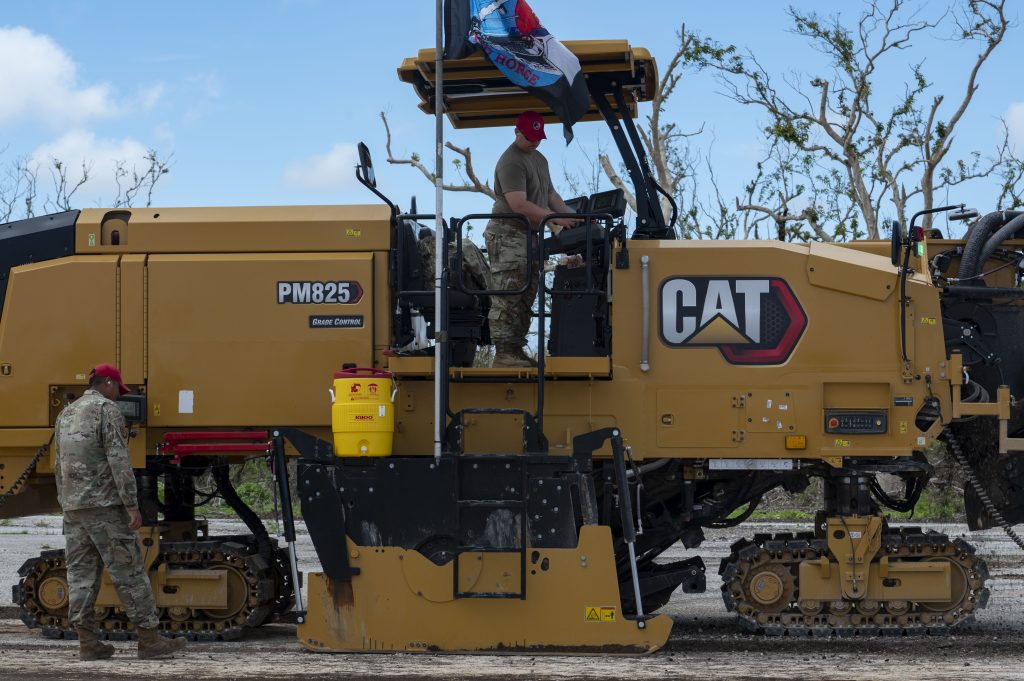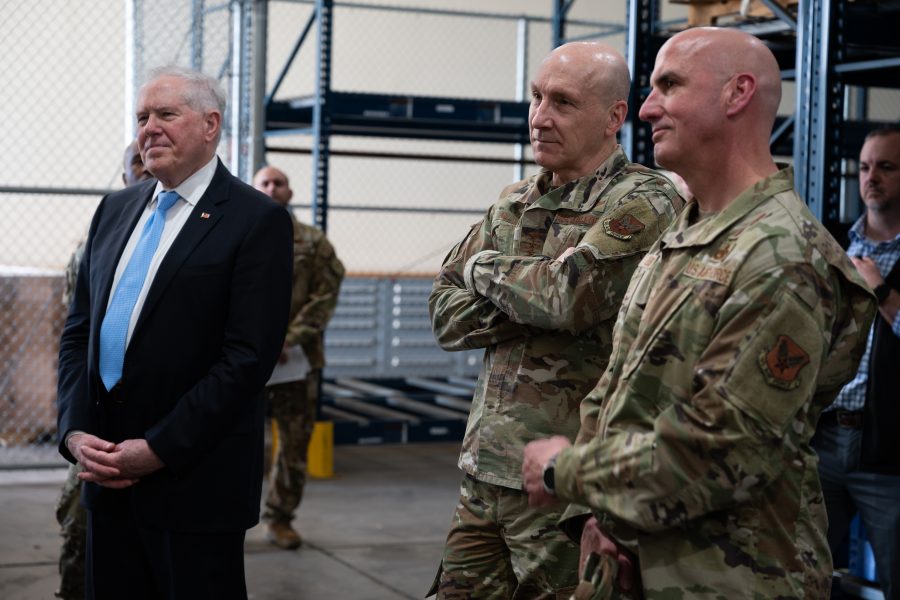Top Air Force officials are on a weeklong tour of the Pacific, including visits to key bases the U.S. hopes to expand to be better positioned for a possible conflict with China. On April 4, Secretary of the Air Force Frank Kendall, Air Force Chief of Staff Gen. David W. Allvin, and Chief Master Sergeant of the Air Force David Flosi visited Saipan and Tinian in the Northern Mariana Islands and Guam at the southern end of the island chain, where they met with Airmen and local elected leaders.
Both the Northern Marianas and Guam are U.S. territories. Tinian, which hosted Army Air Force bombers during World War II, is being resurrected to project airpower. Airmen at North Field on the island are restoring the location’s 20 million square feet of pavement so it can be a future operating location under the service’s Agile Combat Employment (ACE) doctrine of dispersed forces. Kendall, Allvin, and Flosi observed the efforts, the Air Force said.
Allvin said in a news release Tinian would “increase flexibility” and the Airmen conducting the work were “pathfinders for advancing our scheme of maneuver in the Indo-Pacific.”
Earlier in the week, the service leaders visited U.S. Indo-Pacific Command (INDOPACOM) and its boss Adm. John C. Aquilino and Pacific Air Forces (PACAF) head Gen. Kevin B. Schneider, in Hawaii. There, they were briefed on upcoming ACE training and exercises, the Air Force said.
“Nearly three years ago, I entered office deeply concerned about the security challenges inherent in the Pacific,” Kendall said. “The rapid buildup of the Chinese military is the defining challenge we face.”
The trip is aimed at evaluating the Department of the Air Force’s progress in adapting to that threat, the leaders said.
“The leadership and Airmen here in PACAF are laser-focused on working with our Allies and partners to deter aggression, and defeat it, if necessary,” Allvin said.
On Tinian, the 513th Expeditionary RED HORSE Squadron began work on North Field in January, clearing hundreds of acres of jungle around the old airfield, the Air Force said. The Air Force has operated from Tinian International Airport as part of recent exercises, but the USAF has since been able to conduct “austere landings” at North Field since the jungle was cleared.

“This small team has a large task,” Kendall said in the release. “They are working at a remote, austere location to reclaim a historical airfield.”
Tinian is planned as an alternative location—or a spoke—for nearby Andersen Air Force Base—a hub—on Guam as part of ACE. Andersen serves as the Air Force’s main base in the Western Pacific but was devastated by a typhoon last year. Allvin and Flosi hosted an all-call there to discuss the Air Force’s re-optimization initiative.
The U.S. military plans to use small islands in the Pacific, such as those in the Compacts of Free Association—the Federated States of Micronesia, the Republic of the Marshall Islands (RMI), and the Republic of Palau—and U.S. territories such as Guam and Northern Mariana Islands. The Air Force plans to spend $400 million upgrading the airfield on the island of Yap and has already budgeted more than $70 million for work on Tinian.
